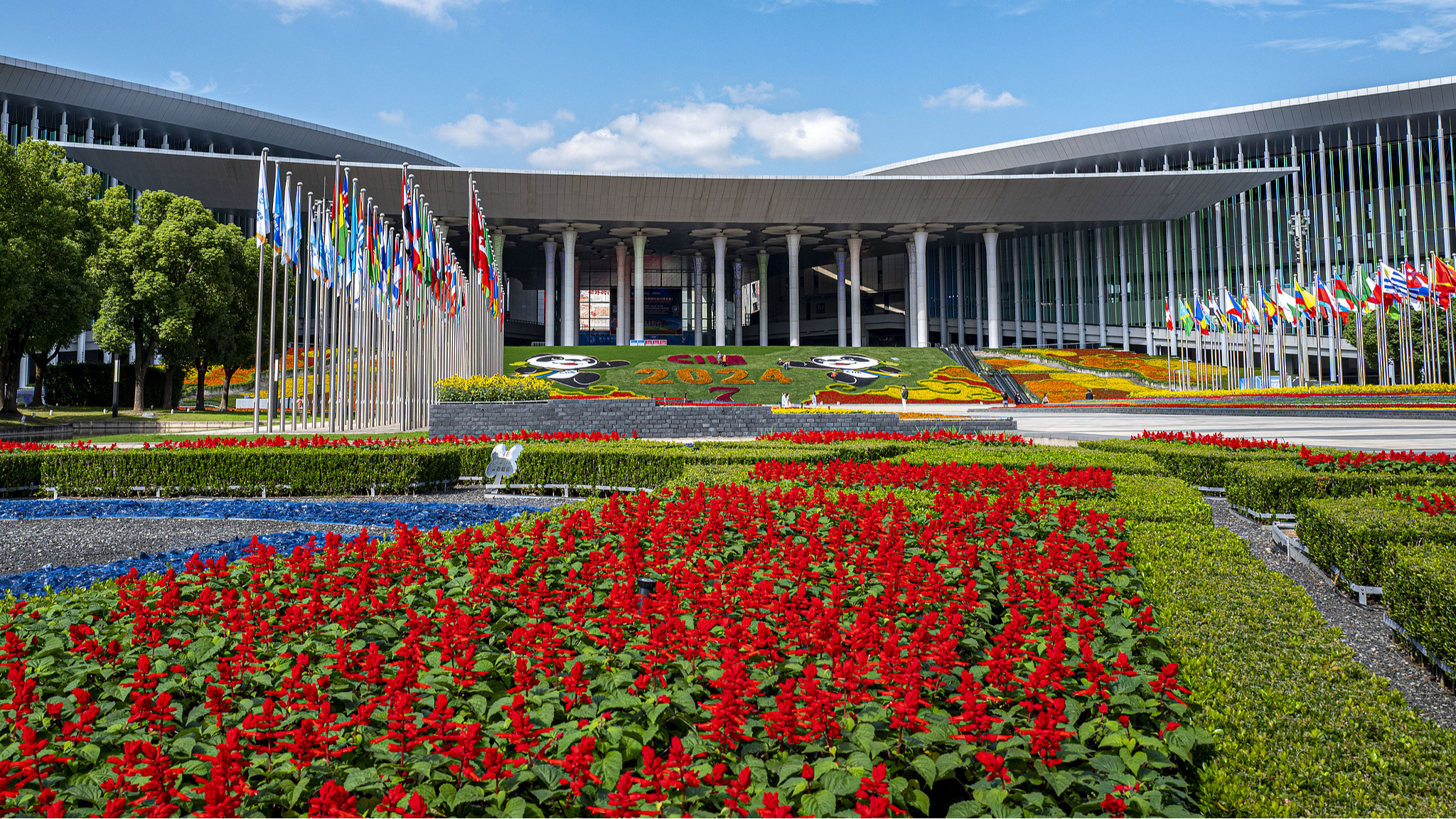
Editor’s note: Stephen Ndegwa, a special commentator for CGTN, is the Executive Director of South-South Dialogues, a Nairobi-based communications development think tank. The article reflects the author’s opinions and not necessarily the views of CGTN.
As the world economy contends with disruptions, the China International Import Expo (CIIE), running from November 5 to 10 in Shanghai, offers a bright spot for economic cooperation. Now in its seventh year, this event is more than just an exhibition. It stands as evidence of China’s commitment to trade liberalization, economic globalization and an open world economy.
With the participation of 152 countries, regions and international organizations, the CIIE underscores the potential of collaborative trade efforts in spurring global growth, particularly for developing countries seeking broader market access.
The CIIE’s significance transcends that of conventional trade shows. At a time when protectionism and isolationist policies have gained traction in various corners of the world, it exemplifies China’s role as a major economy promoting open trade. Held annually in Shanghai, this initiative by the Chinese government aims to enhance cross-border trade and international relations by reducing trade barriers.
The CIIE’s emphasis on trade liberalization serves as a timely countermeasure to current trade dynamics, where rising protectionist policies threaten global economic stability. Since 2018, an era marked by escalating tariffs and protectionist policies between major economies, the benefits of free trade have been undermined by political disputes and economic sanctions.
China’s sustained advocacy for liberal trade policies through the CIIE demonstrates its long-term commitment to cooperation over conflict. For participants, the CIIE presents a golden opportunity to showcase products, foster investment and forge partnerships within China and beyond.
The expo’s timing is strategic, given the current state of the global economy. The World Bank recetnly revised its global economic growth projections downward, estimating the growth of 2.1 percent in 2023 and 2.4 percent in 2024 amid rising inflation and mounting geopolitical risks. In such a context, the CIIE serves as an essential conduit for reviving trade networks, facilitating business, and enabling developing countries to access the world’s second-largest economy.
With over 400 million middle-income consumers, China represents an invaluable market for goods and services from around the world. In 2022 alone, China imported $2.7 trillion worth of goods, reaffirming its role as a leading importer and a pillar of international trade.

Moreover, the expo directly contributes to economic growth by enabling emerging and developing economies to tap into China’s market, boosting trade volumes and increasing their global competitiveness. By granting access to its massive consumer base, the CIIE has allowed small and medium-sized enterprises from across Asia, Africa, Latin America and Europe to enter the Chinese market.
The CIIE showcases China’s dedication to inclusive trade by offering tailored initiatives that engage countries of varying economic backgrounds. For instance, special incentives are offered to companies from the least developed countries, allowing them to exhibit at the expo at a minimal cost. This inclusion enables marginalized nations to become more integrated into global value chains, fostering more resilient and diversified economic development.
In addition to promoting free trade, the CIIE focuses on enhancing supply chain resilience. Recent global crises, from geopolitical tensions to the COVID-19 pandemic, have exposed vulnerabilities in global supply chains. The CIIE aims to foster interconnectivity between industries and regions, creating partnerships capable of withstanding future disruptions.
Exhibitors from sectors such as technology, agriculture, health and logistics are poised to showcase new supply chain models. The exhibition of high-tech solutions, including artificial intelligence, data analytics and green energy, enables participants to explore innovations that could increase flexibility and sustainability in supply chains.
A primary objective of the CIIE is to drive sustainable economic growth through innovation. Aligned with China’s 2060 carbon neutrality goals, the expo prioritizes products and technologies that contribute to a greener, low-carbon economy. It provides a platform for international companies to collaborate, share best practices, and scale innovative solutions globally. The United Nations Environment Program has noted that sustainable growth hinges on global cooperation in green technology, and the expo directly addresses this need by featuring global pioneers in sustainability.
Beyond economic considerations, the CIIE plays an invaluable role in deepening cultural exchanges. Cultural fairs and exhibitions form part of the expo, offering a unique platform for different countries to showcase their cultural heritage. Such exchanges are crucial for building mutual understanding and respect, essential ingredients for lasting international partnerships.
(If you want to contribute and have specific expertise, please contact us at opinions@cgtn.com. Follow @thouse_opinions on X, formerly Twitter, to discover the latest commentaries in the CGTN Opinion Section.)
